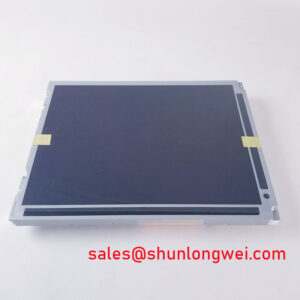<!– wp:paragraph –>
Metatarsalgia is often used to describe pain in the diaphyseal metatarsal surface of the distal second and third metatarsals. The cause of pain is usually partial or complete collapse of the transverse arch formed by the metatarsal head.</p>
<!– /wp:paragraph –>
<!– wp:image {“align”:”center”,”id”:6396} –>
<div class=”wp-block-image”><figure class=”aligncenter”><img src=”https://aideastep.com/wp-content/uploads/2021/07/v2-f8102d8ba72ba4e6f9dc70a15ff17244_r-247×300.jpg” alt=”” class=”wp-image-6396″ /></figure></div>
<!– /wp:image –>
<!– wp:paragraph –>
Plantaraches can be caused by poor gait biomechanics, abnormal foot anatomy, or congenital abnormalities involving the foot or ankle. Although metatarsalgia is often accompanied by changes in the first and fifth sequences of bunion and bursitis, it can also occur in other normal feet.</p>
<!– /wp:paragraph –>
<!– wp:paragraph –>
The key structural abnormality in metatarsalgia is the loss of support provided by the transplantar ligaments and joint capsules, which suspend the distal bones of the metatarsals. These ligaments will gradually break when subjected to too much pressure, causing the first sequence to deviate (ie, tilt). If the joint capsule of the plantar surface ruptures, the head of the metatarsal bone may subluxate towards the plantar surface of the foot. In extreme cases, the insertion of metatarsal heads and flexor tendons can cause hammertoes.</p>
<!– /wp:paragraph –>
<!– wp:paragraph –>
Patients with metatarsalgia complain of sharp pain in the plantar surface of the distal metatarsal area. Pain is often described as stepping on a stone. The second and third metatarsal heads are the most common pain sites. Sitting down can relieve pain, and shoes with forefoot support can sometimes relieve pain. Walking barefoot can increase discomfort. Instep pain is more common in stress fractures and is not a typical feature of metatarsalgia. Burning pain or neuropathic pain suggests neuroma or neuritis. In addition to stress fractures and Morton neuroma, the differential diagnosis of this disease in adolescents also includes Freiberg disease.</p>
<!– /wp:paragraph –>
<!– wp:paragraph –>
Older patients have a higher risk of metatarsalgia, which affects women more. Athletes who repeatedly bear a greater impact on their forefoot are at increased risk, such as middle and long-distance runners. When athletes often wear spikes (such as baseball spikes or track spikes), shoes with limited support (also called minimalist running shoes), or shoes with too high heels, the pressure on the forefoot will increase.</p>
<!– /wp:paragraph –>
<!– wp:paragraph –>
Pregnant women will experience ligament laxity related to hormonal changes. Many people will experience a certain degree of longitudinal or transverse arch collapse, especially when excessive weight gain occurs during a certain pregnancy. This may trigger pain throughout the plantar area or along the longitudinal arch.</p>
<!– /wp:paragraph –>
<!– wp:image {“align”:”center”,”id”:6397} –>
<div class=”wp-block-image”><figure class=”aligncenter”><img src=”https://aideastep.com/wp-content/uploads/2021/07/�Ž�ͼ_20210705154509-300×277.png” alt=”” class=”wp-image-6397″ /></figure></div>
<!– /wp:image –>
<!– wp:paragraph –>
The most common anatomical abnormality associated with metatarsalgia is that the first metatarsal is too short or the second metatarsal is too long. But even if the length of the metatarsals is normal, changes in the arch of the foot such as extremely flat feet or high arches often cause metatarsalgia. When the surgery for hallux valgus or hallux stiffness fails, pressure may be transferred from the metatarsal surface of the first metatarsal toe to the middle metatarsal bone, resulting in acquired metatarsalgia.</p>
<!– /wp:paragraph –>
<!– wp:paragraph –>
The clinical examination results of metatarsalgia include: the horizontal arch is flat or the toes are inclined when standing; the plantar arch of the plantar surface disappears when sitting. Abnormal plantar calluses can occur at any metatarsal head, most commonly in the second metatarsal head, which is often referred to as Morton corpus calluses. Pain can be induced by palpation at the distal metatarsal shaft immediately adjacent to the metatarsal head. Neither standard radiographs nor ultrasound can confirm metatarsalgia. Imaging should only be used when a metatarsal stress fracture is suspected, or when standard treatment is ineffective, suggesting a rare cause of foot pain such as metastases or bone cysts.</p>
<!– /wp:paragraph –>
<!– wp:paragraph –>
The initial treatment of metatarsalgia involves the placement of a plantar pad.</p>
<!– /wp:paragraph –>
<!– wp:paragraph –>
A small observational study compared walking shoes, sandals, and custom sandals with built-in plantar pads. Compared with other shoes, the painless walking time when wearing custom sandals increased to 2 times, and the painless walking distance increased to 2 3 times. Small uncontrolled prospective studies have shown that the correct placement of support pads (to reduce pressure on the distal metatarsals) is closely related to pain relief. Plantar pads are particularly important for older patients, whose forefoot pain is associated with reduced physical activity and increased risk of falls. When the plantar pad is ineffective, some small observational studies have shown that a custom-made orthopedic device that can relieve the pressure on the distal metatarsal and make the pressure distribution on the plantar surface more uniform can significantly reduce pain and increase the patient’s ability to walk. Surgery is the last resort to treat metatarsalgia. Traditional metatarsal osteotomies generally fail gradually. New reconstruction techniques may be effective for patients with persistent pain, but long-term outcomes need to be studied.</p>
<!– /wp:paragraph –>
<!– wp:paragraph –>
How to self-manage metatarsalgia?</p>
<!– /wp:paragraph –>
<!– wp:paragraph –>
<strong>Rest.> Protect your feet from further damage by reducing stress. Lift your feet after standing or walking. You may need to stop strenuous exercise for a period of time, but you can try to influence smaller exercises, such as swimming or cycling.</p>
<!– /wp:paragraph –>
<!– wp:paragraph –>
<strong>Apply ice to the affected area>. Apply ice to the affected area several times a day, once for about 20 minutes. To protect the skin, wrap an ice pack in a towel and then touch the skin.<br>Take over-the-counter painkillers. Try ibuprofen, naproxen sodium, or aspirin to reduce pain and inflammation.</p>
<!– /wp:paragraph –>
<!– wp:paragraph –>
<strong>Wear suitable shoes>. Avoid shoes that are too tight or too loose, and limit the time to wear high heels. Wear sports shoes suitable for exercise.</p>
<!– /wp:paragraph –>
<!– wp:paragraph –>
<strong>Use metatarsal pads>. These ready-made pads can be placed in front of the metatarsals of the shoe to help transfer pressure from the painful area.<br>Consider arch support. If the insole does not help, the doctor may recommend arch support to minimize the pressure on the metatarsal bones and improve foot function. The arch brace can be purchased in a pharmacy or customized.</p>
<!– /wp:paragraph –>
<!– wp:paragraph –>
In daily life, metatarsalgia can greatly be relieved by using orthotic insoles. The below style is solely designed for the metatarsalgia, the detail info is:</p>
<!– /wp:paragraph –>
<!– wp:paragraph –>
Style #: MP-01</p>
<!– /wp:paragraph –>
<!– wp:paragraph –>
Material: Velvet + EVA pad + Sticker</p>
<!– /wp:paragraph –>
<!– wp:paragraph –>
Function: Support the transverse arch and relieve forefoot pressure and metatarsalgia</p>
<!– /wp:paragraph –>
<!– wp:paragraph –>
Feature: Soft TPE Pads Provide High Shock Absorption</p>
<!– /wp:paragraph –>
<!– wp:image {“id”:6395} –>
<figure class=”wp-block-image”><img src=”https://aideastep.com/wp-content/uploads/2021/07/MP-01��ͼ2-300×300.jpg” alt=”” class=”wp-image-6395″ /></figure>
<!– /wp:image –>
Link:metatarsalgia relieve insole
REF: Hearing aids China, ITE hearing aids, BTE Hearing AidsThe article comes from the Internet. If there is any infringement, please contact [email protected] to delete it.



